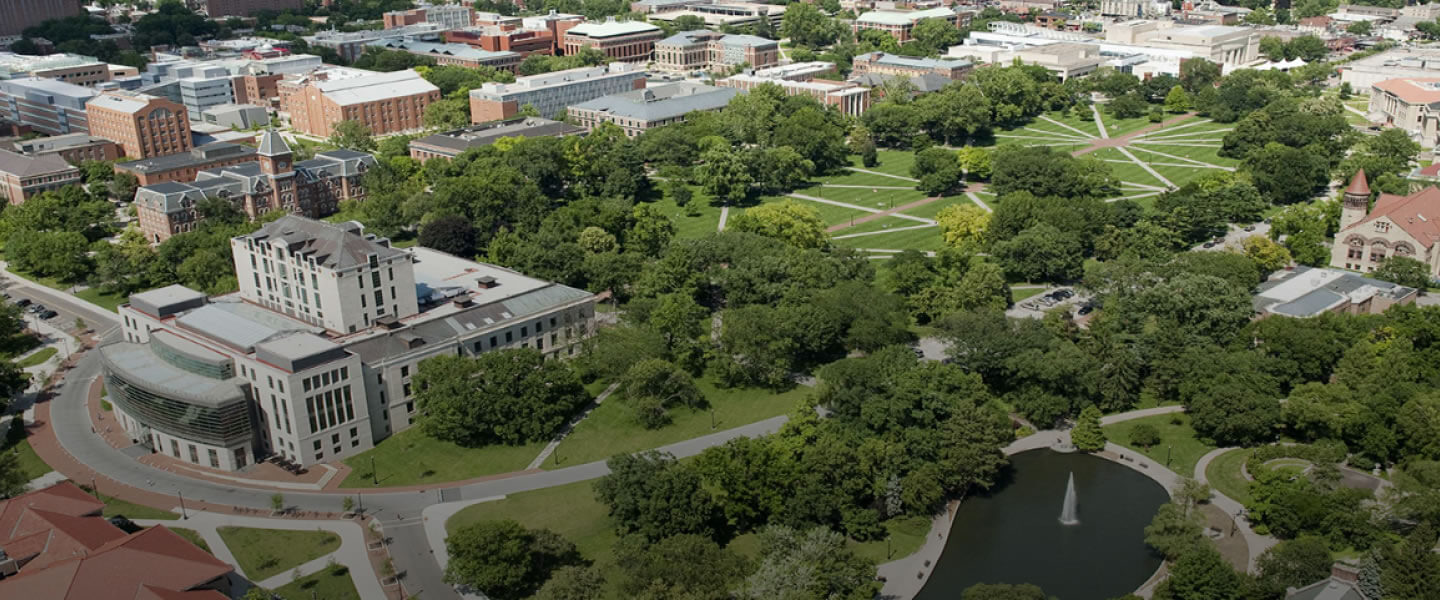The Ohio State University Pioneers Model for Energy Innovation
PLANET
2050
carbon neutral
EFFICIENCY
+ 25%
energy efficiency within 10 years
As a prominent higher education institution—one of the top 20 public universities in the US—The Ohio State University has long been committed to excellence.
With an ambitious goal to become an international pioneer in sustainability, Ohio State entered into a 50-year integrated solutions agreement with Ohio State Energy Partners (OSEP), a public-private partnership between ENGIE North America and Axium Infrastructure in 2017. This unique partnership not only addresses the university’s sustainability and energy operations goals, but also funds and guides academic initiatives, such as an energy innovation center and support for scholarships and internships in the realm of energy innovation.
ENGIE’s Partnered Approach
Ohio State Energy Partners is an exemplar of the partnered approach ENGIE takes with its clients. In the case of Ohio State, all the components of OSEP’s sustainable energy operations projects were developed hand-in-hand with the university. Likewise, to further the academic collaboration component of the agreement, ENGIE works closely with Ohio State’s Energy Academic Collaboration Council (EACC). Composed of students and faculty, the EACC guides OSEP’s efforts and ensures meaningful campus engagement in the advancement of the sustainability academic mission of the university.
The Solution
Leveraging the combined expertise of ENGIE, Axium Infrastructure, and Ohio State leaders, the OSEP agreement can be summarized by four areas:
Operations: As part of OSEP, ENGIE is tasked with operating the systems that power, heat, and cool Ohio State’s Columbus campus under a 50-year lease of the university’s energy assets. Through its performance guarantees, ENGIE assumes responsibility for the resiliency and reliability of these systems.
Sustainability: In collaboration with Ohio State, OSEP develops and implements energy conservation projects which contribute to the university’s ability to reduce its carbon footprint. Specifically, within the first 10 years of the partnership, OSEP has committed to improve energy efficiency by a minimum of 25% on the Columbus campus. The university reviews each capital project and approves those that are expected to provide appropriate environmental and financial benefits.
Supply: OSEP is working with Ohio State to enhance its effectiveness in the procurement process for electricity, natural gas, and other energy sources.
Academic collaboration: In addition to a $1.015 billion upfront payment to the university, OSEP will fund and carry out a $150 million commitment to support various academic, research and community interests of Ohio State. Among these projects is an Energy Advancement and Innovation Center. The center will enable Ohio State faculty members, students, alumni, ENGIE Buckeye Operations researchers, local entrepreneurs, and industry experts to work together on the next generation of smart energy systems, renewable energy, and green mobility solutions. OSEP has committed $50 million for the project, including $36.7 million in design and construction costs. In addition to this project, the partnership also supports grants, scholarships and internships at Ohio State.
The Results
Just a few years into the 50-year partnership, Ohio State has already noted improvements in sustainability, beginning with smart metering, lighting upgrades, and various facilities’ utility system upgrades.
Ohio State is benefitting from ENGIE’s significant experience and scale, which enable it to meet its energy and utility commitments.
The agreement is expected to enable Ohio State to achieve its goal of 25% energy efficiency improvement within the first 10 years of the partnership.
Various academic collaboration programs are already underway to benefit students and faculty:
- Each year, 10 students are selected for internships with OSEP, where they work alongside ENGIE and/or Axium team members to support, design and develop capital projects, to drive campus efficiency.
- Students can participate in a range of events like the Smart CampusE Challenge, a venture capitalist-style student sustainability competition. The winning teams receive funding and expert guidance to implement their project on campus.
- Those living on campus can also take part in Residence Hall Energy Competitions, where students compete against other dorms to conserve the most amount of energy.
- OSEP has also co-sponsored West Fest, an interactive community event that showcases how Ohio State researchers and community partners are working to protect the environment, improve natural resource use, and enhance people’s daily lives.
The Energy and Advancement Innovation Center—currently under development—will be a place where collaborators work together on the next generation of smart energy systems, renewable energy, and green mobility solutions. By providing the support and resources necessary to become commercially successful, the center will help promising projects to find a route to market.
About The Ohio State University
The Ohio State University was established in 1870. With a 25-million-square-foot footprint that spans nearly 2,000 acres, the university’s Columbus campus is one of the largest of any public university or college in the United States.
